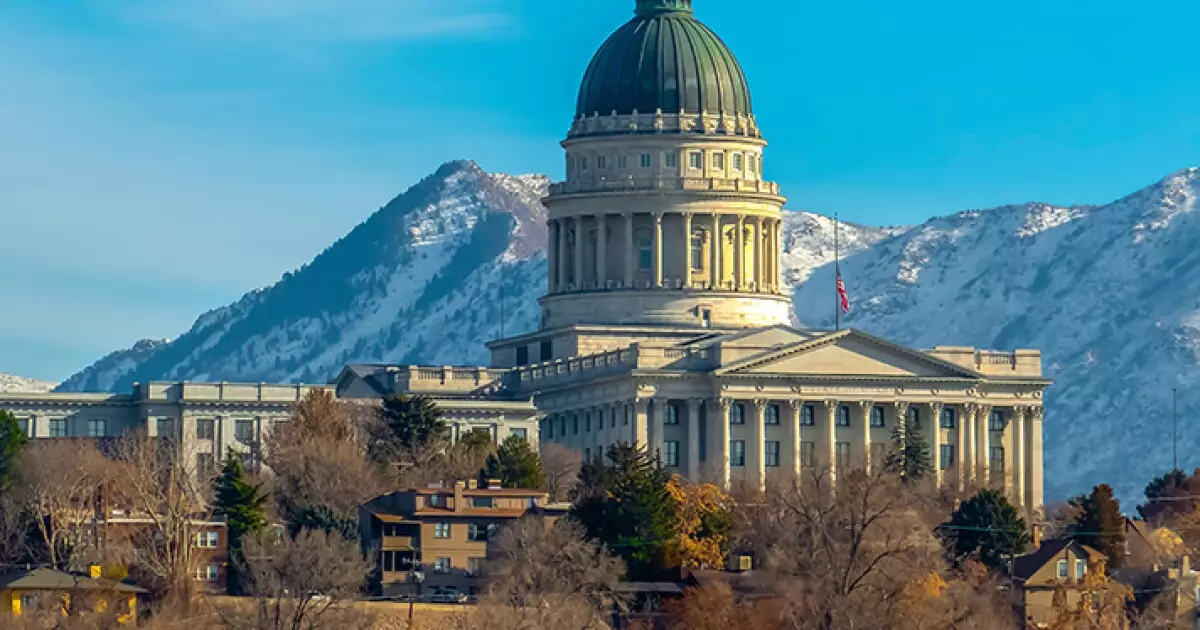Utah’s recently concluded legislative session has stirred considerable conversation, bringing funding opportunities and infrastructural ambitions to the forefront. Among the most significant decisions was the passage of a $30.8 billion budget for fiscal 2026, which targeted essential sectors while highlighting the state’s desire for ambitious growth and modernization. The slashing of individual income taxes from a flat 4.55% to 4.5% reveals the administration’s attempts to appeal to taxpayers while calling into question the sustainability of such cuts amidst increasing fiscal demands.
While tax reductions can initially appear favorable to citizens, they may be masking deeper issues. As revenues potentially decline, will Utah be equipped to fortify its infrastructure and social services? Balancing reduced taxes with increasing budget items for ambitious projects like energy initiatives and major event venues is a tightrope walk that deserves scrutiny. This approach may lead to long-term financial strain, jeopardizing the completion of projects vital for the state’s future.
Development and Environmental Tensions
The proposal that allows Salt Lake City to establish a convention center reinvestment zone under Senate Bill 26, thereby enabling the use of local tax revenues to fund the renovation of the Salt Palace convention center, is another double-edged sword. While Mayor Erin Mendenhall aptly remarked that this revitalization can unleash the downtown area’s potential, the accompanying financial strategies raise alarm bells. The heavy reliance on property tax increment financing shortcuts traditional funding mechanisms, possibly challenging the integrity of public investment and leading to over-leverage in future bonds.
Moreover, Utah’s infrastructural projects evoke environmental concerns, particularly surrounding the controversial actions taken by the Utah Inland Port Authority. Engaging in extensive adjustments to public infrastructure districts, as seen in the newly signed SB 239, could well stir further opposition. Environmental groups have vocally opposed the perceived infringement on natural resources and ecosystem protection. The insistence on infrastructure development, especially without adequate environmental studies, can lead to catastrophic repercussions for local habitats, putting the welfare of residents and their environment on the line.
The ongoing lawsuits from environmental advocates represent a clash between progressive growth and the preservation of natural beauty that Utah is famous for. Are we prepared to risk long-standing ecosystems for the promise of new dollars? This constant juxtaposition between growth and preservation embodies a critical dialectic that we must engage with carefully.
Nuclear Energy: A Path Forward or a Hazardous Gamble?
In the shadow of the growing energy crisis, the budget champions the controversial Operation Gigawatt initiative. By allocating $10 million towards nuclear power development and forming a Nuclear Energy Consortium through House Bill 249, Utah appears to be pivoting significantly towards nuclear as part of its energy strategy over the next decade. While proponents like Governor Spencer Cox have emphasized the necessity of a robust energy plan, concerns loom large regarding safety and the long-term viability of nuclear energy.
Is nuclear really the answer to our energy woes? Notably, the stigma surrounding nuclear energy persists, alongside arguments favoring renewable energy sources as safer and more sustainable. While exploring nuclear energy may diversify Utah’s energy portfolio, it begs the question of public sentiment and environmental safety. Engaging in transparency regarding the decision-making process surrounding nuclear plants may help assuage public fears, but here again arises the concern of tackling this transformative initiative within an already contentious fiscal plan.
Sports Facilities and Their Socioeconomic Impacts
The focus on enhancing sports facilities—evidenced by the investment in the Delta Center and the impending renovations to the Salt Palace—underscores the burgeoning desire to establish Utah as a sporting hub, particularly with the Winter Olympics on the horizon. While these investments can stimulate local economies and foster community pride, the prevailing question remains: at what cost?
With $900 million allocated for the remodeling of the Delta Center and similar endeavors, communities will need to reconcile the need for sports infrastructure with the equally urgent need for social services, schools, and healthcare. These massive investments may overlook pressing issues like education funding or homelessness, which require immediate attention and could be compounded by the debt incurred in financing these glamorous projects. Utah’s lawmakers must aim to create a balance—a philosophy that ties economic vitality with the welfare of all residents.
Cryptocurrency: An Underexplored Frontier
Finally, the discussions around cryptocurrency legislation reflect Utah’s potential to delve into emerging financial technologies. Yet, the decision to limit investments in digital assets signals caution, suggesting lawmakers are still wrestling with the philosophical implications of digital currency amidst fluctuating market conditions. The overly bullish inclination towards controlling digital asset acceptance, framed under the guise of consumer protection, brushes against the novel wealth-generation opportunities that crypto presents.
With other states embracing cryptocurrency as a vital part of their economic strategy, Utah’s hesitance may yield it lagging behind progressive movements that lean into technological innovation. While safeguards are necessary, we must allow room for exploration and adaptation within our financial frameworks to avoid stifling growth and innovation.
Through the upcoming years, Utah faces challenges as it seeks to balance ambitious development goals with fiscal responsibility, environmental stewardship, and progressive socioeconomic policies. The decisions made today will undeniably shape the path Utah follows into an uncertain but potentially fruitful future.

